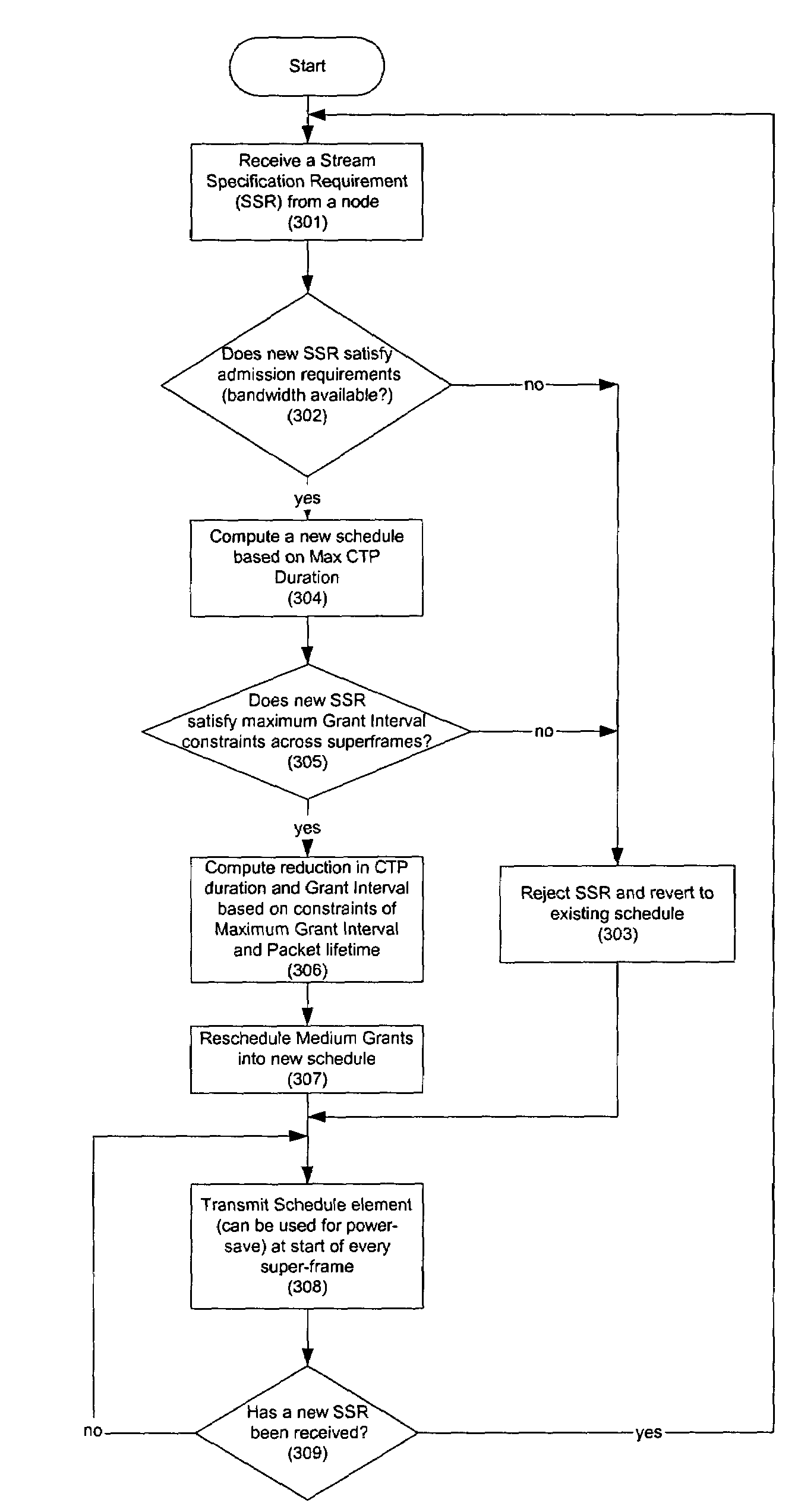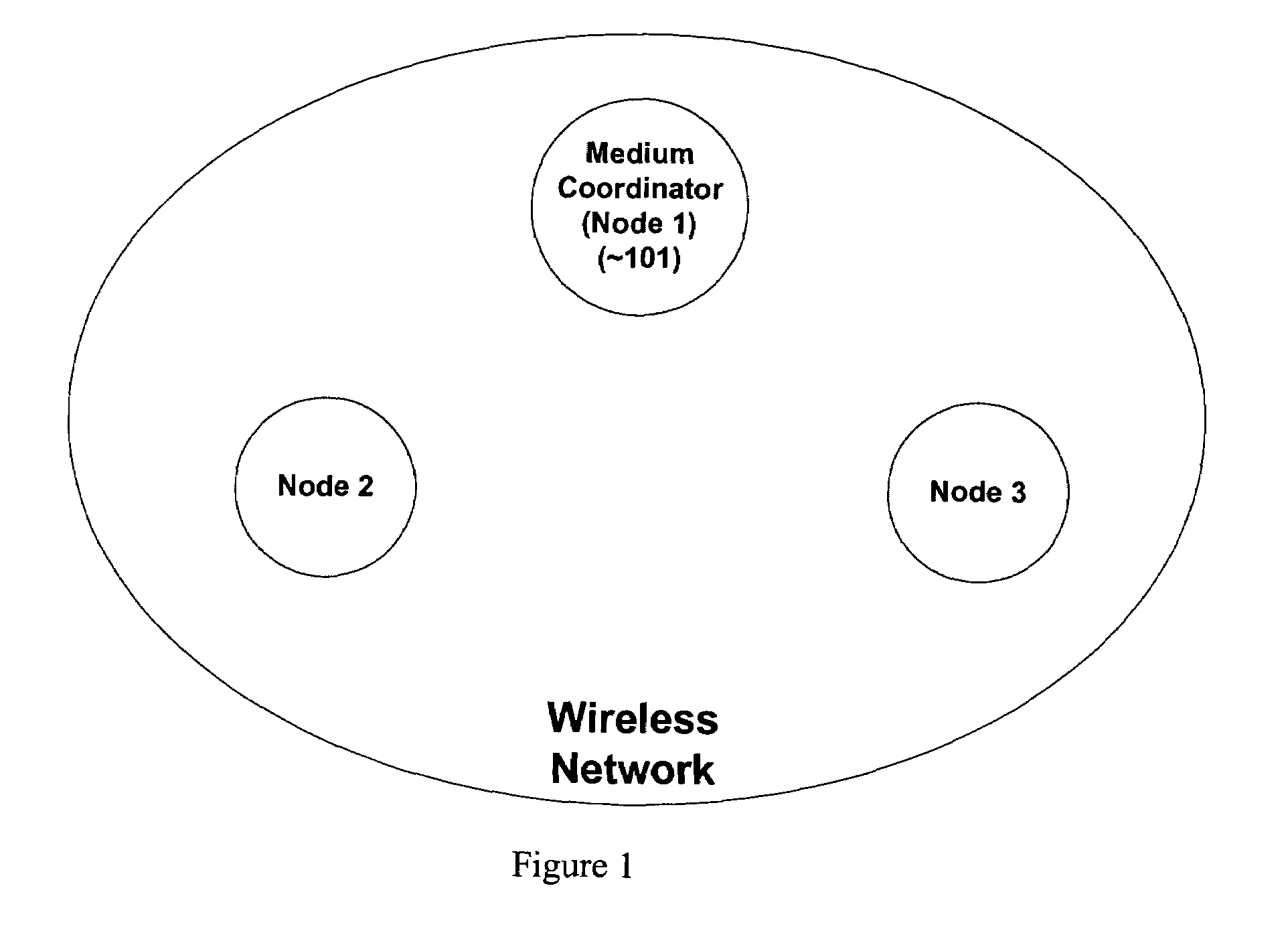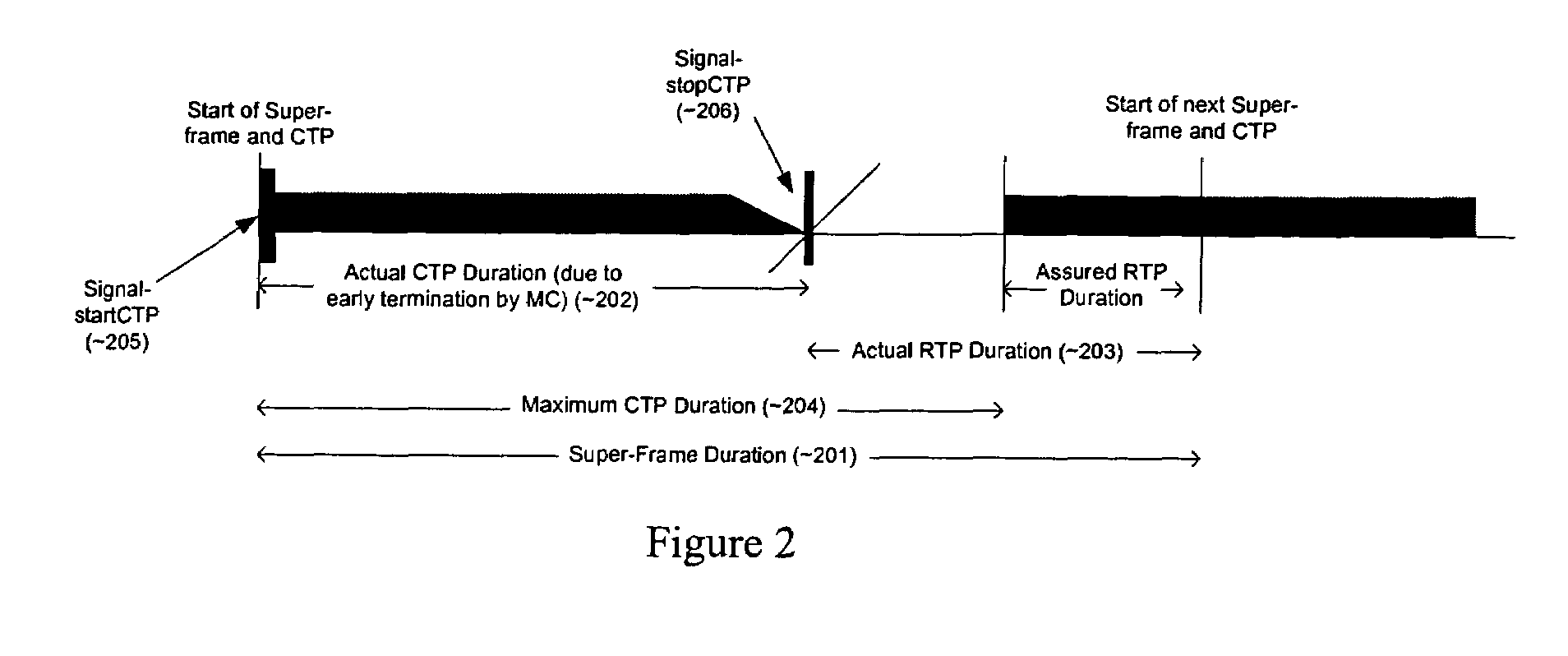Method and system for scheduling traffic in a wireless network
a wireless network and traffic scheduling technology, applied in data switching networks, high-level techniques, frequency-division multiplexes, etc., can solve the problem of not providing a system that can achieve the same, and achieve the effect of optimizing the number of individual accesses and minimizing the variance between unused accesses
- Summary
- Abstract
- Description
- Claims
- Application Information
AI Technical Summary
Benefits of technology
Problems solved by technology
Method used
Image
Examples
Embodiment Construction
[0031]The particulars shown herein are by way of example and for purposes of illustrative discussion of the embodiments of the present invention only and are presented in the cause of providing what is believed to be the most useful and readily understood description of the principles and conceptual aspects of the present invention. In this regard, no attempt is made to show structural details of the present invention in more detail than is necessary for the fundamental understanding of the present invention, the description is taken with the drawings making apparent to those skilled in the art how the forms of the present invention may be embodied in practice.
[0032]An apparatus and methods to schedule the transmission of traffic while providing a certain level of QoS, in a WLAN network is disclosed in this section. To help understand the invention, the following definitions are used:
[0033]A “WLAN” refers to a wireless local area network. It contains an arbitrary number of devices i...
PUM
 Login to View More
Login to View More Abstract
Description
Claims
Application Information
 Login to View More
Login to View More - R&D
- Intellectual Property
- Life Sciences
- Materials
- Tech Scout
- Unparalleled Data Quality
- Higher Quality Content
- 60% Fewer Hallucinations
Browse by: Latest US Patents, China's latest patents, Technical Efficacy Thesaurus, Application Domain, Technology Topic, Popular Technical Reports.
© 2025 PatSnap. All rights reserved.Legal|Privacy policy|Modern Slavery Act Transparency Statement|Sitemap|About US| Contact US: help@patsnap.com



